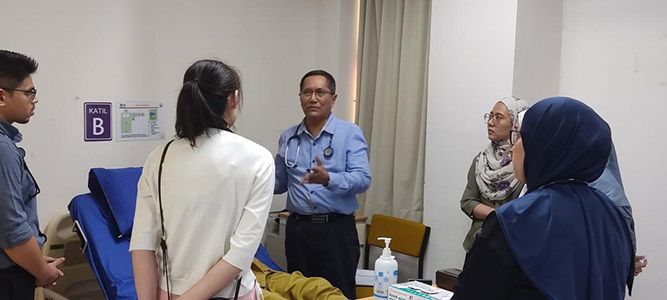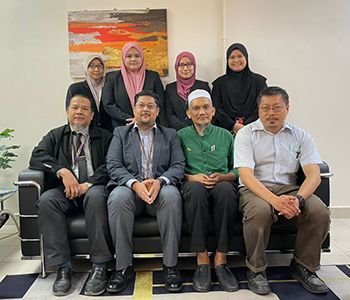Master of Medicine in Internal Medicine (MMed.Int.Med) programme of Universiti Sains Malaysia is a specialist training programme for a qualified medical practitioner to be an internal medicine physician. The programme was first established in 1988 with 4 candidates and over the years it has produced many Internal Medicine specialists in the country. It is a conjoint programme with 6 other universities namely Universiti Malaya, Universiti Kebangsaan Malaysia, Universiti Putra Malaysia, Universiti Teknologi Mara, Universiti Islam Antarabangsa and Universiti Malaysia Sarawak.
Training Requirement
In USM, the training programme is divided into three phases; PI, PII, and PIII. In PI which is year one, according to sponsors arrangement, a candidate may continue their training focus on general internal medicine in their sponsor agreed institution or with USM in a (2 + 2) years schedule framework. Such scheduling is not applicable for private or international candidate
In PII which consist of second and third year training, spanning a period of 24 months, candidate undergo a minimum of 8 subspeciality rotations majority of which is of 12 weeks duration with some over 6 weeks. This is further illustrated in the subspeciality menu item. Not all subspeciality rotations are available in USM. Some has to be outsourced to neighbouring institution.

Long Case 'Exam'

Serious but 'Santai'

Short Case Training
In Phase III which is the final year of training, candidate are given responsibility to function as clinical registrar, preparing them to be future internal medicine consultant. Research and development play a major role in the field of medicine, and we want our students to have these kinds of skills. The program requires candidates to write a research dissertation, which they must defend during an exit viva.
Exam Requirement
Prior to entrance into the program, candidates needs to qualify through MEDEX Internal Medicine exam.
In addition to ongoing assessments, candidates must take two tests during the program. The first is the Phase II Professional Examination, which will include both a clinical and theoretical component. as well as the exit viva for the research dissertation that was turned in.
To receive the postgraduate scroll, one must successfully complete both the training and exam requirements.
